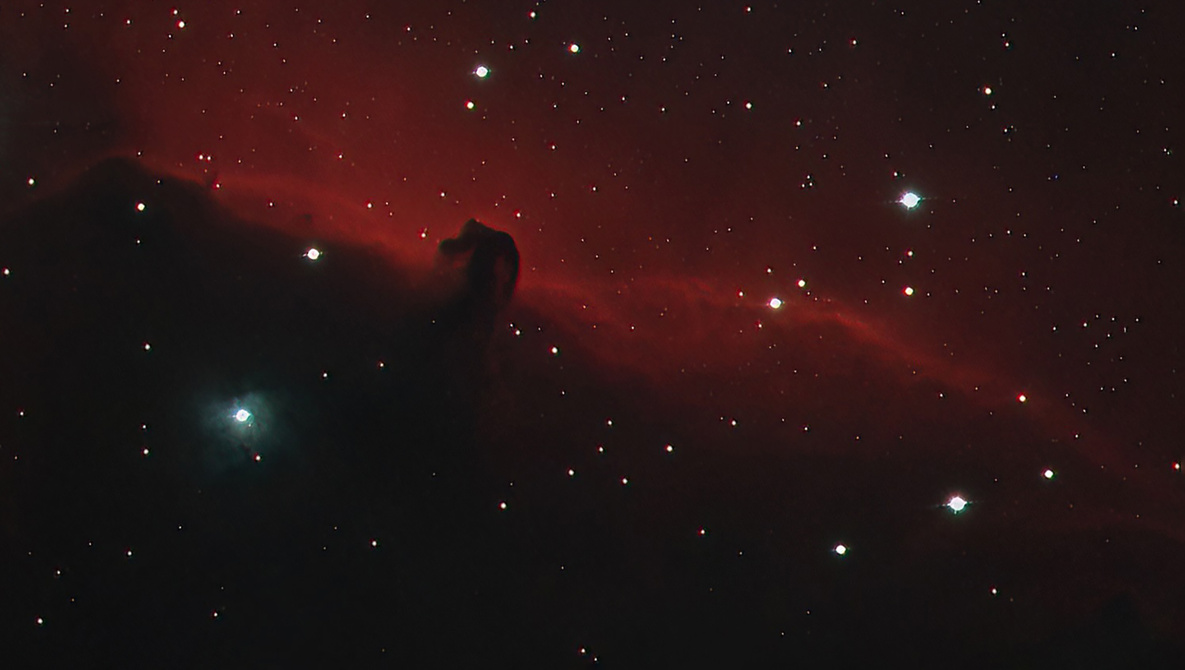[ad_1]
A couple of days ago, my colleague, Ivor Rackham, had a positive review of Affinity Photo 2. What many people miss is that Affinity Photo is also an excellent astro image-processing tool.
Most astrophotographers need special software tools to process their images. Photoshop won’t natively deal with astro camera image files, which are in the FITS format. There are some powerful tools out there for astro images, like Pixinsight, Siril and the Astro Pixel Processor. All three run on Macs and Windows OS.
About a year ago, Affinity Photo quietly added the ability to handle FITS files, and it does it with aplomb. When you open Affinity Photo 2 (the latest version, but Affinity Photo does this as well), there’s a little hint in the file menu that this app handles astrophotos.

Now on a holiday sale for $40.99, Affinity Photo 2 does a lot of things good regular editing software does, and many prefer it to Photoshop. Among its many astrophotography skills is the aforementioned stacking of FITS files. Stacking increases signal and reduces noise, and if you use features like Sigma Clip when stacking, it will remove airplane and satellite trails automatically.
With Affinity Photo 2, you select a stack of images, set a method of combining images to optimize image parameters, then click “stack,” and you’ll have a single image. Affinity Photo 2 will stack 32-, 16- or 8-bit images and let you adjust levels and curves. It also handles dark, light, and bias frames, a method astrophotographers use to get the cleanest images possible.
When you first open an astrophoto, even if it has been stacked, the dynamic range is very low. The Andromeda Galaxy in this image is not more than a smudge.
 After stacking and playing with levels and curves, the galaxy begins to reveal itself.
After stacking and playing with levels and curves, the galaxy begins to reveal itself.
 After color balancing, noise reduction, sharpening, evening out the background, and flipping the image 180 degrees for aesthetics, it comes out pretty well.
After color balancing, noise reduction, sharpening, evening out the background, and flipping the image 180 degrees for aesthetics, it comes out pretty well.

Of course, as mentioned, there are other tools too, like PixInsight, but while extremely powerful, it’s not exactly intuitive when you first learn it.
Affinity Photo 2 also supports some Photoshop plugins, like the RCAstro Gradient Xterminator, which can be a lifesaver for images with uneven sky backgrounds, usually a result of light pollution. The Topaz tools, like Sharpen AI and DeNoise, also work as plugins in Affinity.
For Mac users, the Affinity software’s ability to stack and process FITS file is a godsend, as Mac editors have fewer simple astro-processing options than Windows users. Still, many Windows-based astrophotographers are enthusiastic about Affinity Photo.
My workflow is to do the stacking and rough processing of my imaging in Affinity, then I may finish in Affinity or move over to Photoshop. I know astrophotographers who do everything in Affinity Photo and a few plugins, and they are getting great results.
Affinity Photo is a fraction of the price of Photoshop or PixInsight, and it does the basic things very well. It’s not as full-featured as PixInsight, but the learning curve is far quicker, and once the stacking and artifact rejection is finished, you can output your image as a 16-bit TIFF and process away with the more conventional editor of your choice. To speed the process, there are a lot of third-party macros for astrophotography available for Affinity Photo, so it seems the software is growing in popularity and influence.
As a Photoshop replacement, I don’t think Affinity Photo 2 is what I need for my daily non-astronomical editing. But as a place to do most of the heavy lifting for astrophotos I think it’s more than capable. Photoshop still natively won’t handle FITS files or do the sophisticated stacking done by Affinity Photo 2.
At the holiday pricing, it’s a no-brainer if you’d like a simple and reliable way to produce astrophotos.
What I Like
- Low price.
- Easy to use, with a lot of online videos and discussion groups that explain how it works.
- Handles FITS files. If you are using an astronomy camera rather than a standard DSLR or mirrorless camera, you’ll have to be able to deal with the FITS format. Photoshop doesn’t natively open these files.
What Could Be Improved
- The operational aspects of the program aren’t like most photo editors. There’s a brief learning curve.
- Many of the features editors may want are not basic to the program, like star-shrinking, but they can be accomplished within Affinity Photo or with third-party macros,
- Affinity has some documentation of the astrophotography features, but they are not the main focus of the software. I owned Affinity Photo for almost a year before I noticed the astrophotography features.
I can’t say that using Affinity Photo for processing astrophotos is the best app available, or the most full-featured. But it’s reasonably priced, does the stacking and adjustments very nicely, and should be under consideration if you are looking to get into astrophotography or want to expand your software tools.
[ad_2]
